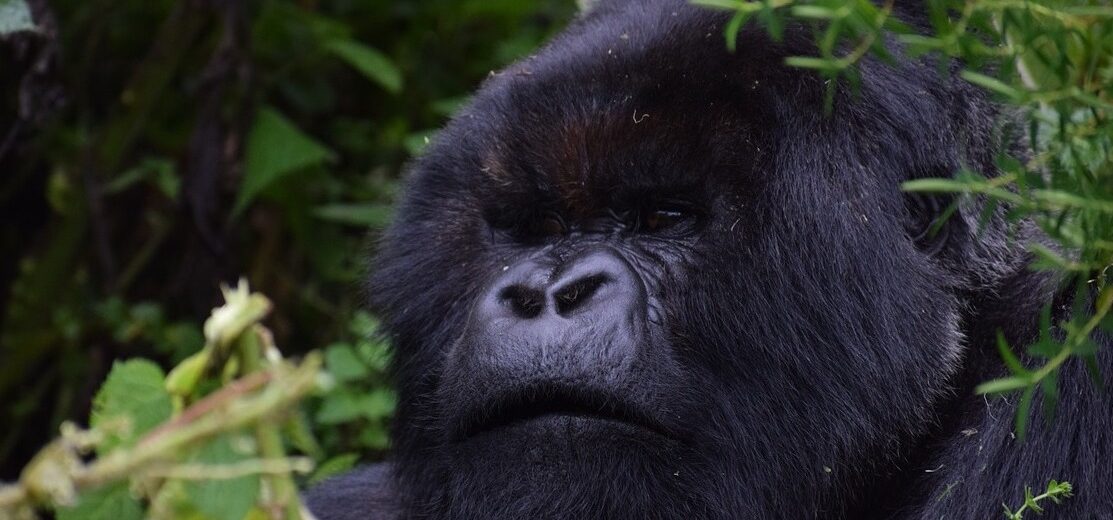
Having the same emotions as humans, the mountain gorilla will laugh when tickled, cry when sad, and experience anger, frustration, and love. They are the largest known primates on earth. They also love their vegies; eating about 50 lbs. of them a day! Tragic as it is, there are only an estimated 1,063 individuals remaining in the wild to date. They are listed as Endangered by the IUCN. This is due to habitat loss, human interference, pollution, climate change, and invasive species… to name a few.
First the Stats…
Scientific name: Gorilla beringei beringei
Weight: Up to 396+ lbs.
Height: Up to 5.5+ feet
Lifespan: Up to 50 years
Now on to the Facts!
1.) Approximately 98% of mountain gorilla’s DNA matches our own!
2.) They make beds for themselves, each night, out of leaves and sticks.
3.) Half of the mountain gorilla population lives in Bwindi Impenetrable National Park in Uganda.
4.) Mountain gorillas barely drink water, getting most of their hydration from the plant matter they eat.
5.) Mountain gorillas are the largest primates on earth!
But wait, there’s more on the mountain gorilla!
6.) As male mountain gorillas age, they develop silver hair on their back. This has earned them the name silverbacks.
7.) Female mountain gorillas can start reproducing when they reach 10 years of age.
Did you know…?
The mountain gorilla is so intelligent, that they can be taught sign language!
8.) A habituated mountain gorilla can indirectly generate around $3,200,000 million during its lifetime from tourist income!
9.) Each habituated gorilla family is visited by just one group of tourists per day and that visit is strictly limited to 1 hour!
10.) Gorillas can climb trees, but are usually found on the ground in communities of up to 30 individuals. These troops are organized into amazing social structures.
But wait, there’s still more on the mountain gorilla!
11.) Besides plant matter, these beautiful creatures also consume ants, snails, and even bark. Bark is a good source of sodium.
Did you know…?
Mountain gorillas are the only gorilla subspecies who’s population is actually increasing.
12.) Mountain gorillas can make up to 16 different types of calls.
13.) They live in patriarchal (male dominated) groups called troops. Troops consist of around 10 individuals.
14.) These magnificent beasts can be found at elevations of up to 13,000 feet.
15.) Although not overly territorial, the dominant male (silverback) will fight to defend his harem of females.
Now a Short Mountain Gorilla Video!
Also, check out the Critter Science YouTube channel. Videos added frequently!
Want to suggest a critter for me to write about? Let me know here.




Leave a Reply